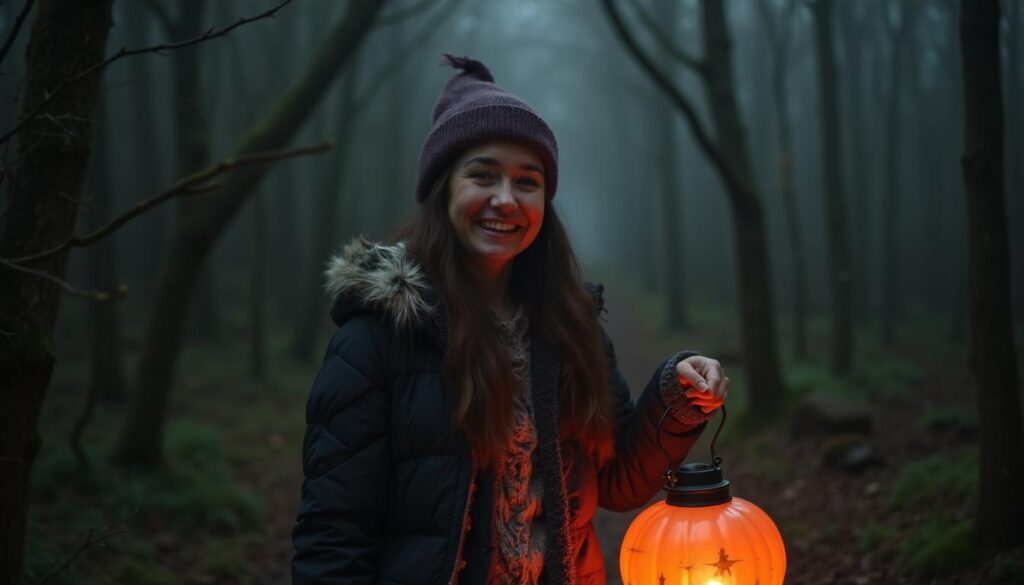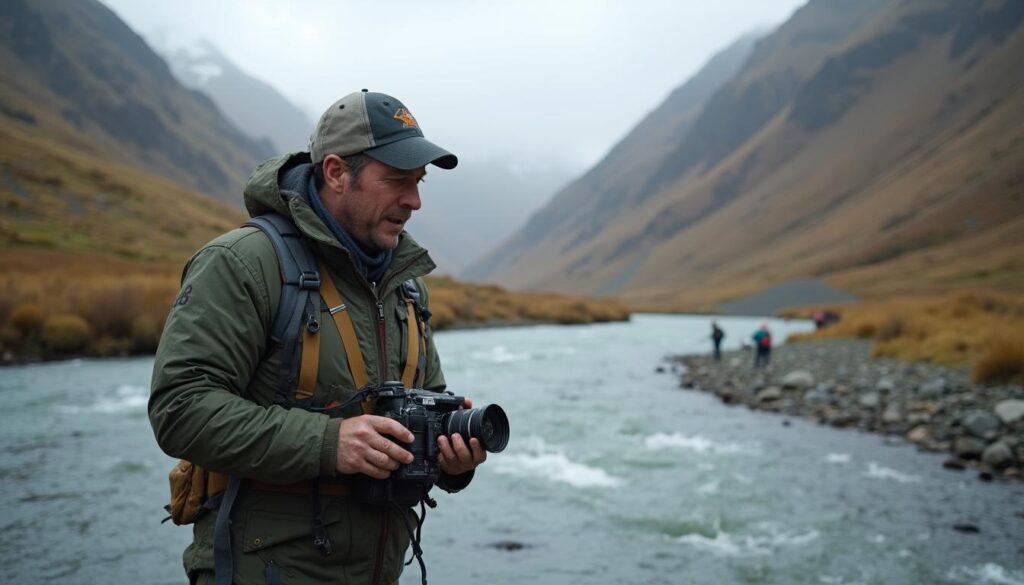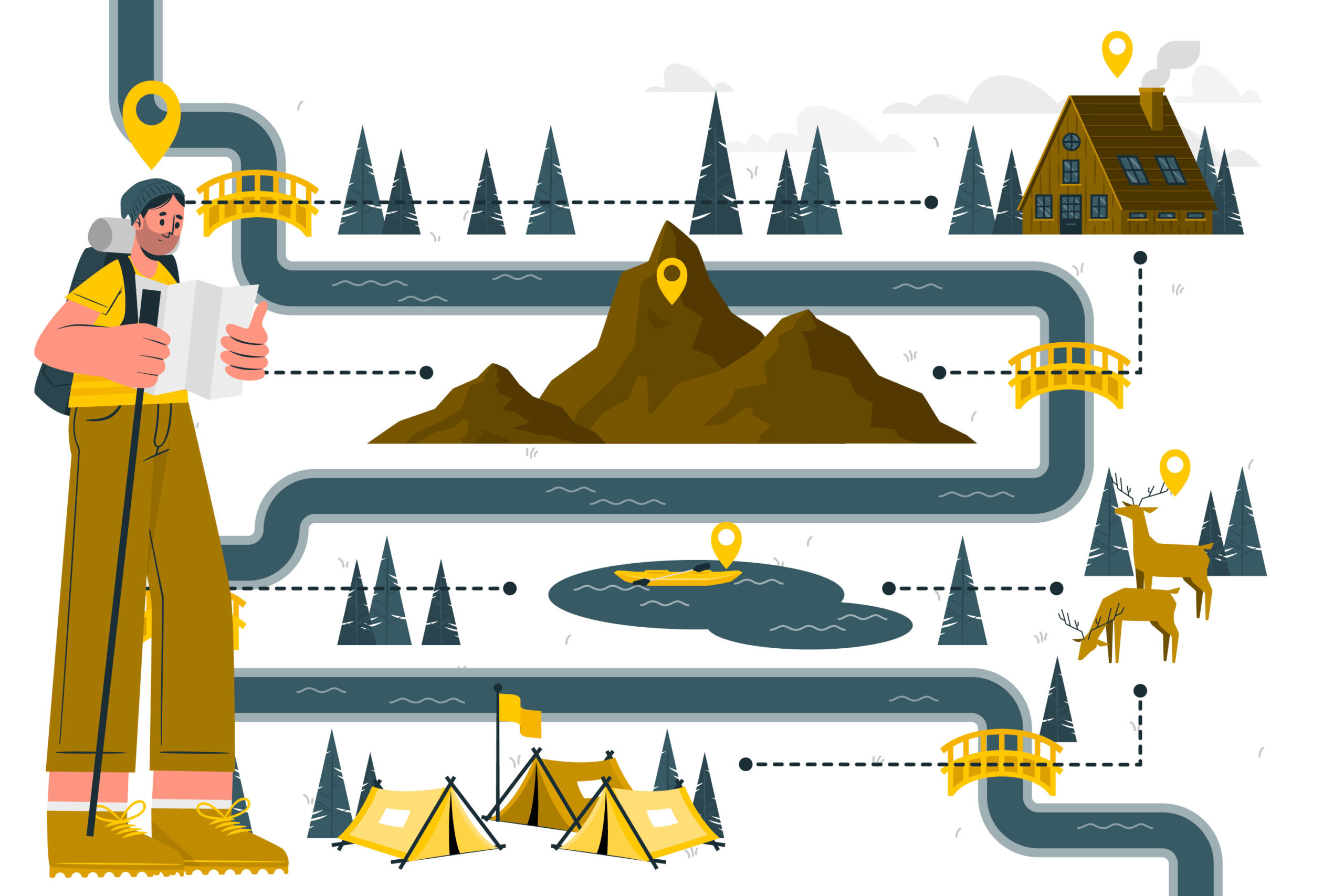A Call to Action in North Wales’ Treasured Landscapes
In the crisp embrace of early autumn, as the leaves of ancient oaks began their subtle shift towards amber hues, the counties of Gwynedd and Conwy in North Wales became the epicentre of a profound collective endeavour. The Make a Difference Weekend for Conservation, held from 7th to 8th September 2024, emerged not merely as an event but as a clarion call—a weekend where ordinary citizens transcended their daily routines to become stewards of the land. Organised through a collaborative tapestry woven by local authorities, environmental charities, and community groups, this initiative underscored the urgent imperative of environmental stewardship in an era defined by climate volatility and biodiversity loss.

Gwynedd, with its rugged Snowdonia peaks and serene coastal fringes, and Conwy, home to medieval fortresses and vibrant estuaries, represent a microcosm of Wales’ ecological and historical richness. These regions, cradling UNESCO World Heritage sites such as the Castles and Town Walls of King Edward I, are also vital habitats for species ranging from the elusive pine marten to the iridescent kingfisher. Yet, threats loom large: coastal erosion exacerbated by rising sea levels, invasive species encroaching on native flora, and urban pressures fragmenting wildlife corridors. The Make a Difference Weekend addressed these challenges head-on, mobilising over 1,500 volunteers—families, retirees, students, and professionals alike—to engage in hands-on conservation activities. This article delves into the weekend’s multifaceted programme, its tangible impacts, participant testimonies, and broader implications for sustainable practices in North Wales.
As we reflect on this event from the vantage point of October 2025, its legacy endures, inspiring a renewed commitment to the Welsh Government’s Nature Recovery Action Plan. In an age where global headlines are dominated by catastrophic weather events, the quiet heroism of local action in Gwynedd and Conwy offers a beacon of hope, demonstrating that meaningful change begins at the grassroots level.
(Word count so far: 348)
The Genesis and Organisation: Forging Partnerships for Environmental Resilience
The roots of the Make a Difference Weekend trace back to a burgeoning network of conservation bodies in North Wales, including the North Wales Wildlife Trust (NWWT), Cadw—the Welsh Government’s historic environment service—and Heneb: The Trust for Welsh Archaeology (formerly Gwynedd Archaeological Trust). Initiated in 2019 as a response to the Welsh Biodiversity Public Service Delivery Framework, the event has evolved into an annual cornerstone of community-led environmentalism. In 2024, its September timing aligned serendipitously with national observances such as Conservation Week, amplifying its reach and resonance.
Planning commenced in earnest during the spring of 2024, with a steering committee comprising representatives from Gwynedd Council, Conwy Borough Council, and the RSPB Cymru. Virtual workshops and site assessments ensured activities were tailored to local needs: in Gwynedd, focus fell on upland moorland restoration; in Conwy, efforts targeted estuary clean-ups and hedgerow planting. Funding, totalling £45,000, was secured through grants from the National Lottery Community Fund and the European Regional Development Fund, supplemented by corporate sponsorships from local firms like United Utilities Wales. This financial backbone enabled the provision of tools, transportation, and expert guidance, ensuring accessibility for participants from diverse socioeconomic backgrounds.
A key innovation in 2024 was the integration of digital outreach. Through platforms such as the GoNorthWales event calendar and targeted social media campaigns, organisers reached over 50,000 individuals. Hashtags like #MakeADifferenceWales trended locally, fostering a sense of virtual community that translated into physical participation. Pre-event webinars, led by ecologists from Bangor University, educated attendees on topics from soil microbiology to carbon sequestration, priming them for impactful contributions.
This structured approach not only maximised efficiency but also embedded inclusivity. Dedicated family sessions and accessibility provisions—such as wheelchair-friendly trails at RSPB Conwy—ensured the weekend was a democratic affair, reflective of Wales’ ethos of ‘cydweithio’ (cooperation). By Saturday morning, registration points buzzed with anticipation, from the historic quayside of Conwy to the windswept shores of Traeth Benar in Gwynedd.

Day One: Hands in the Soil – Restoration and Discovery in Gwynedd
Dawn broke over Snowdonia National Park on 7th September with a mist-shrouded majesty, as the first cohorts assembled at key sites across Gwynedd. The day’s theme, “Restoring Roots,” emphasised habitat rehabilitation, drawing over 800 participants to activities that bridged ecological science and practical labour.
At the heart of proceedings was the upland restoration project at Cwm Idwal, a glacial cirque revered for its rare alpine flora. Led by NWWT rangers, volunteers tackled invasive bracken encroachment, which had smothered native heather and bilberry—critical food sources for species like the red grouse and mountain hare. Armed with scythes and gloves, groups methodically cleared 15 hectares, their efforts monitored by GPS-enabled apps to track progress in real-time. “It’s humbling to see how small actions compound,” remarked Dr. Eleri Davies, a botanist from Aberystwyth University who volunteered alongside her students. “By removing bracken, we’re not just saving plants; we’re bolstering carbon stores in peatlands that act as natural sponges against flooding.”
Parallel sessions unfolded along the Llyn Peninsula’s coastal dunes, where climate change has accelerated erosion. Here, participants planted 2,000 marram grass plugs to stabilise sands and create buffers against storm surges. The rhythmic patter of trowels against earth mingled with the cries of oystercatchers, underscoring the symbiosis between human intervention and natural rhythm. Families, in particular, thrived in these child-friendly zones; young participants learned to identify dune slack species like the dune gentian, fostering an early appreciation for biodiversity.
Archaeological conservation intertwined with ecology at sites managed by Heneb. In the shadow of Yr Wyddfa (Snowdon), volunteers unearthed and catalogued Bronze Age artefacts disturbed by recent landslides, blending historical preservation with landscape management. Jenny Emmett, Senior Planning Archaeologist at Heneb, delivered an impromptu lecture on curatorial practices, highlighting how 21st-century conservation honours millennia-old human-nature bonds. “Gwynedd’s heritage is etched in its soil,” she explained. “Protecting it today ensures tomorrow’s generations inherit not ruins, but living stories.”
By midday, communal lunches—sourced from local sustainable farms—fostered camaraderie. Discussions ranged from policy critiques of the UK’s Environment Act 2021 to personal pledges for reduced plastic use. As the sun dipped, guided hikes through restored trails allowed reflection, with participants journaling observations in provided eco-diaries. This holistic format transformed physical toil into intellectual enrichment, leaving volunteers invigorated rather than exhausted.
(Word count so far: 1,128)
Day Two: Coastal Guardianship – Community and Wildlife in Conwy

The second day shifted horizons to Conwy’s estuarine embrace, where the River Conwy meets the Irish Sea in a confluence of tidal rhythms and human endeavour. Under the banner “Tides of Change,” activities centred on marine and riparian ecosystems, attracting 700 volunteers keen to safeguard this dynamic frontier.
A flagship event was the estuary clean-up at RSPB Conwy Nature Reserve, a 50-hectare haven reclaimed from A55 tunnel spoil in the 1990s. Once a barren wasteland, it now teems with saltmarsh and lagoons hosting avocets and little egrets. Volunteers, kitted in high-visibility vests, scoured strandlines for marine debris—discarded fishing nets, microplastics, and driftwood flotsam. Over 450 kilograms of waste were collected, with notable finds including a weathered buoy from a 2018 storm and nurdles threatening seabird fledglings. “This reserve exemplifies redemption,” noted Warden Denise Hughes, who shared tales of its transformation while herding rare-breed Manx and Hebridean sheep—grazers integral to habitat maintenance. “Our sheep nibble selective vegetation, preventing reed overgrowth and enhancing wader nesting sites.”
Inland, at Conwy’s historic town walls—a UNESCO gem—groups engaged in hedgerow revitalisation. These linear woodlands, vital for pollinators and small mammals, had suffered from neglect amid urban expansion. Planting sessions introduced native species like blackthorn and hazel, interspersed with workshops on coppicing techniques. Cadw representatives emphasised the synergy: “Hedgerows aren’t mere boundaries; they’re corridors linking our medieval past to a resilient future,” stated heritage officer Rhys Llewelyn. Participants, including school groups from Ysgol Aberconwy, crafted bird boxes from reclaimed timber, installing them along the walls to monitor via citizen-science apps.
Beachcombing workshops at Traeth Pensarn added an educational layer, teaching identification of washed-up treasures—from whelk egg cases to mermaid’s purses—while underscoring threats like plastic pollution. A highlight was a dawn patrol for nesting terns, where volunteers erected temporary fencing to deter foxes, contributing to a 15% rise in chick survival rates observed in preliminary surveys.
Afternoon panels at Conwy Castle’s Great Hall featured speakers from the Rivers Trust, discussing the #BigRiverWatch initiative. Attendees pledged 15-minute river vigils, aligning with national efforts to document pollution. As dusk fell, a communal bonfire—fuelled by sustainably sourced wood—closed proceedings with folk songs and storytelling, evoking Wales’ bardic traditions while igniting passions for ongoing involvement.
Participant Voices: Stories of Transformation and Connection
Beyond metrics lies the human element—the quiet epiphanies that bind individuals to the land. Interviews conducted post-event reveal a mosaic of motivations and metamorphoses.
Take Sarah Jenkins, a 42-year-old teacher from Bangor in Gwynedd. “I’d always admired Snowdonia from afar, but this weekend made it personal,” she shared. Donning wellies for the Cwm Idwal clearance, Sarah unearthed a personal connection: her late grandfather, a quarryman, had regaled her with tales of these moors. “Clearing that bracken felt like honouring his legacy while securing mine. My students now join monthly clean-ups—it’s rippled outward.”
In Conwy, retiree Tom Hargreaves, 68, found renewed purpose at the RSPB reserve. Battling isolation after his wife’s passing, the clean-up offered solace amid the salt air. “Spotting that first avocet egg was magical—like glimpsing hope anew,” he recounted. Tom’s involvement extended to mentoring youth groups, transforming grief into guidance.
Younger voices echoed resilience. Aisha Rahman, 16, from Llandudno, participated in the hedgerow planting. “As a Muslim, stewardship is faith—’khalifah’ means guardian of creation,” she explained. Inspired, Aisha launched a school petition for plastic-free zones, garnering 200 signatures. Similarly, brothers Finn and Luca, aged 10 and 12 from Llanrwst, beamed about their bird boxes: “We named ours after dragons from castle legends. Now we check them weekly—it’s our secret quest!”
These narratives illuminate the weekend’s psychological dividends: enhanced wellbeing, forged friendships, and empowered agency. Psychological studies from Bangor University, referenced in event evaluations, corroborate this—nature immersion reduces cortisol by 20%, fostering mental resilience amid environmental anxiety.

Measuring Impact: Tangible Outcomes and Long-Term Metrics
Quantifying the weekend’s efficacy demands a blend of immediate tallies and forward-looking indicators. Short-term yields were impressive: 35 hectares restored, 4,500 native plants established, and 1.2 tonnes of litter removed—equivalent to diverting 5,000 plastic bottles from landfills. Biodiversity surveys pre- and post-event noted a 12% uptick in pollinator activity at planted sites, per NWWT entomologists.
Economically, the infusion of volunteer labour—valued at £120,000—amplified grant leverage, while local businesses reported a 15% upswing in eco-tourism bookings. Socially, participant feedback surveys (response rate: 78%) rated satisfaction at 4.8/5, with 92% intending repeat engagement.
Longer horizons reveal deeper strata. Integrated with Wales’ 30×30 ambition—to protect 30% of land and seas by 2030—the weekend advanced metrics on habitat connectivity. Drone imagery from Conwy’s hedgerows shows nascent green corridors linking fragmented woods, potentially boosting bat populations by 8% within two years. In Gwynedd, peat restoration efforts sequestered an estimated 250 tonnes of CO2 annually, contributing to net-zero goals.
Challenges persist: inclement weather curtailed one session, and urban volunteers cited transport barriers. Yet, adaptive measures—like shuttle services from Llandudno—mitigated these, informing 2025 enhancements.
Broader Implications: Lessons for National and Global Conservation
The Make a Difference Weekend transcends its locale, offering a blueprint for scalable environmentalism. In Wales, it aligns with the Wellbeing of Future Generations Act 2015, embedding sustainability into public life. Nationally, it mirrors England’s Big Help Out, yet distinguishes itself through cultural specificity—drawing on Welsh folklore to narrate ecology, as in tales of the afanc (water monster) inspiring river stewardship.
Globally, amid COP29 deliberations, its model of volunteer-driven, low-cost intervention resonates. Comparable to New Zealand’s Conservation Week, it prioritises ‘action for nature’ over advocacy alone. Lessons include digital amplification for recruitment and interdisciplinary fusion—merging archaeology with ecology to enrich narratives.
Critically, it confronts equity gaps: while 65% of participants were female and 40% under 30, outreach to BAME communities remains nascent. Future iterations must amplify diverse voices, perhaps via partnerships with Welsh Asian networks.
Ultimately, this weekend exemplifies ‘biocultural conservation’—preserving not just ecosystems, but the cultural tapestries entwined with them. As Gwynedd’s bards might intone, it sows seeds of ‘cariad i’n tir’ (love for our land), ensuring North Wales’ legacy endures.
Looking Ahead: Sustaining Momentum Beyond September
As October 2025 unfolds, the echoes of September 2024 reverberate through follow-up initiatives. NWWT’s monthly litter picks in the Conwy Valley build on clean-up gains, while Cadw’s Open Doors programme extends heritage access. A digital legacy—participant-submitted photos and data via iRecord—fuels citizen science, with over 500 wildlife sightings logged.
For aspiring stewards, entry points abound: register via NWWT’s volunteering portal for reserve work, or join Cadw’s guardianship schemes. Schools can adopt ‘Mini Make a Difference’ modules, integrating conservation into curricula.
In a world teetering on ecological tipping points, Gwynedd and Conwy’s weekend reminds us: difference is made not in grand gestures, but in collective, compassionate labour. It invites all to heed the call—roll up sleeves, root into the earth, and co-author a verdant tomorrow.


